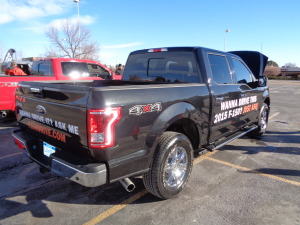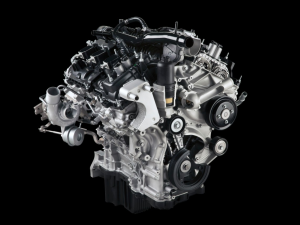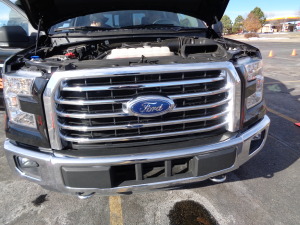
To adhere a “light on its feet” label to a tough-looking vehicle is a major step toward success these days in the automotive truck world.
Ford, on a cold, windy morning this week, showed off its new aluminum-bodied F-150 pickup at a parking lot in Broomfield.
Not only is it 700 pounds lighter, it is stronger than the traditional steel bodies for trucks, says Ford Motor Co.
Some detractors, though, say the durability of aluminum body panels for pickups isn’t yet proven, and it’s a risky move for the country’s leading builder of those vehicles.
Production of the new pickups began last week in Dearborn, Mich., and the models will reach Ford showrooms in this area in December. We’ll then begin to assess how they stack up in the real world.
For me, the level of excitement for testing the 2015 F-150 at Broomfield was heightened by the opportunity to also drive one with power from a relatively small, innovative V-6 engine.
It is the high-output, twin-turbocharged 2.7-liter EcoBoost producing 325 horsepower and 375 lb.-ft. of torque, with towing capability of 8,500 pounds. Only because of the aluminum-lightened body is the 2.7 strong enough for truck duty. It’s the smallest engine to ever power an F-series pickup.

The little V-6, with direct fuel injection, moved the Crew Cab 4-by-4 around in relatively easy fashion. Maneuverability was excellent. Mated to Ford’s electronic 6-speed automatic transmission, the 2.7 is very smooth and its acceleration is strong.
Adding to its economic attributes is Ford’s first stop/start system for a pickup, in which the engine shuts down at stoplights, restarting when brake pressure is eased. It is a fuel-saving feature.
The smaller 2.7 rates better power numbers than Ford’s base 3.5-liter V-6 (283 hp, 255 torque), with higher tow capacity and payload.
The key to use of the small V-6 is, of course, higher miles per gallon. Ford has said the 2015 model will get up to 26 mpg on the highway. One Ford representative told me that the 2.7 in an F-150 Crew Cab averaged 23 overall in a variety of driving duties.
The Crew Cab interior, a bit roomier for 2015, was a quiet cabin during the test-drive operation. Its seats were of wear-resistant vinyl.
The new aluminum body panels will be tied with structural adhesives and rivets, instead of the spot welds which held the former steel panels.

In addition to its turbocharged 2.7 and the base 3.5 engines, also available will be a turboed 3.5 EcoBoost V-6 and a 5.0-liter V-8; the 6.2-liter V-8 has been dropped.